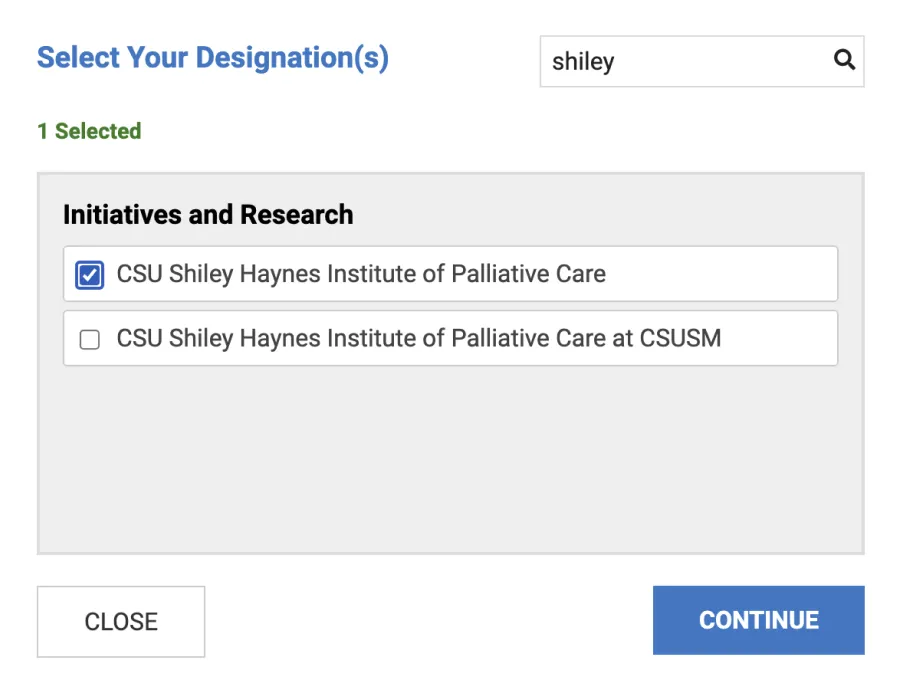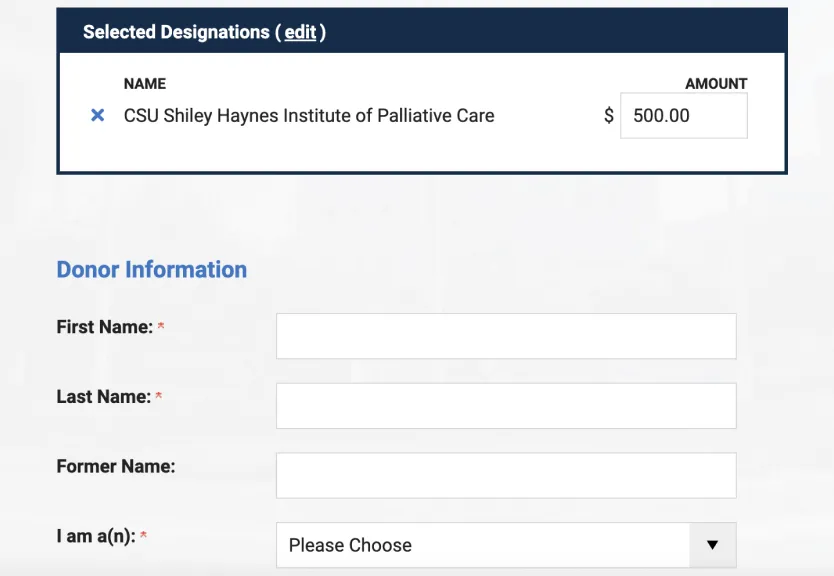cultural competence
Dying in America – Cultural Competence
By Helen McNeal, Executive Director, CSU Shiley Institute for Palliative Care The Institute of Medicine (IOM) in their recent Dying in America
By Helen McNeal, Executive Director, CSU Shiley Institute for Palliative Care The Institute of Medicine (IOM) in their recent Dying in America
The CSU Shiley Haynes Institute for Palliative Care has a proven track record. Read this case study to learn how an Institute course helped a strategic team from a South Carolina hospital make the business case for palliative care by showing their palliative care pilot program saved the hospital $2 million in its first year.
The Institute offers scholarships to cover the full cost of tuition in any Institute course, funded by philanthropist Darlene Marcos Shiley to provide training that can enhance care for patients and families in the San Diego region. Join the interest list below.
If you’ve taken a palliative care course through the Institute, you are part of a movement to transform care for people with serious illnesses and their families. We are invested in your success! Stay connected with us for support, new practice strategies, special offers, and more.
Individuals and organizations committed to improving care and quality of life for people with serious illnesses have supported the CSU Shiley Haynes Institute for Palliative Care since its inception. Their generosity has helped the Institute further its mission and create new palliative care courses that address critical healthcare needs.
Partnering with us couldn’t be easier. We collaborate closely with our corporate clients to understand their vision, assess their needs, deliver convenient and effective distance-learning solutions, and help measure results.
Our online courses are packed with interactive exercises, evidence-based tools and resources, case studies, and other strategies designed to expertly engage adult learners and reinforce retention. Courses are tailored to help nurses, social workers, physicians, chaplains, and other busy health professionals make a measurable impact on care delivery.
Stay engaged with us and receive a quarterly newsletter packed with resources and other important palliative care information.
If you’re passionate about palliative care education and innovation, join our mission to advance and enhance palliative care by educating current and future healthcare professionals, we’d love to connect with you!
The Institute is a respected source of palliative care expertise. If you’re a media professional writing about palliative care, we’re glad to connect you with our staff, faculty, and/or subject matter experts to answer questions or provide a quote.
If you’re a palliative care clinician interested in advancing serious illness care by contributing a blog post or suggesting a story idea, we want to hear from you!
The Institute and its Campus Partners began work in 2018 on a pilot program for an online Faculty Toolkit to help college and university faculty integrate palliative care content into classes in multiple disciplines. The online modules include resources and interactive learning activities that focus on the basics of palliative care and health disparities in palliative care.
It is requested that anyone who requires auxiliary aids such as sign language interpreters and alternative format materials notify the event sponsor at least seven business days in advance. Every reasonable effort will be made to provide reasonable accommodations.
Campus partners build awareness of palliative care through programs for students, faculty, health professionals, and caregivers in their communities.
If you’re a CSU faculty member who is passionate about palliative care, we’d love to talk with you about creating a Campus Partner Institute on your campus. The Institute supports its Campus Partners in several ways, including identifying funders for research, helping with grantwriting, and sharing faculty resources.
If you’re passionate about palliative care education and innovation and have specific skills that complement our mission to advance and enhance palliative care by educating current and future healthcare professionals, we’d love to connect with you!
The CSU Shiley Haynes Institute for Palliative Care is continuously seeking to expand our network of content contributors, and freelancers who are skilled in the following areas:
We are so grateful that you are helping support scholarships for healthcare professionals who need financial assistance to deepen their skills in caring for people with serious illnesses and their families.
Here are some helpful instructions:




